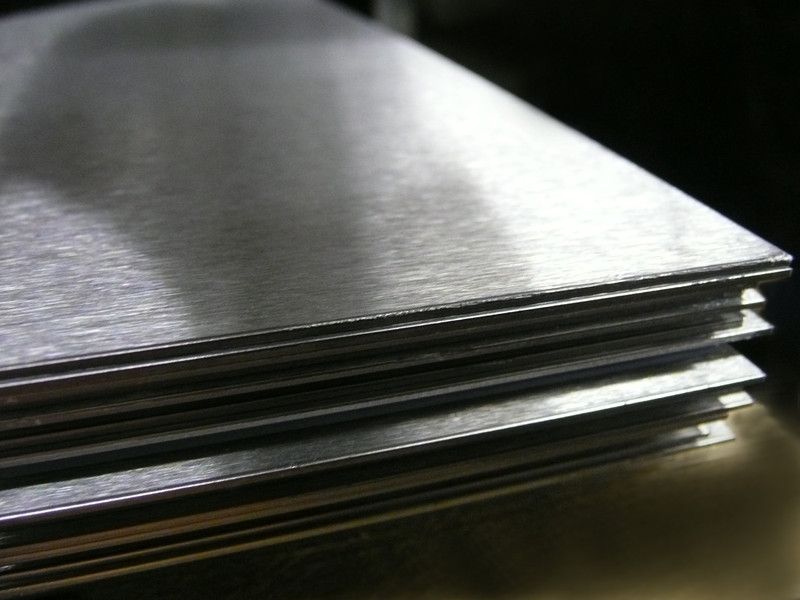You are about to read about stainless steel creation history and know about its types grades. Stainless steel has a great number of uses in different fields. You can get to know its different kinds, in addition you will be able to get familiar with each type special qualities.
Harry Brearley was born on Feb 18, 1871 and by 1907 was in charge of the Brown-Firth Research Laboratory in Sheffield, England. The research lab was investigating ways in which to eliminate rust in gun barrels, once unintentionally, Mr. Brearley noticed a discarded steel sample from an earlier test was not rusting, while other samples were. The result was a chrome alloy steel, much more rust resistant than seen before. The date was June 4, 1912. 2 months later, on August 20, 1912, stainless steel was cast for the first time and the story start to begin.
Stainless steels are worthy of attention or notice for their corrosion resistance, which increases with increasing the amount of chromium content. Thus, there are abundant type or grades of stainless steel with varying chromium contents to suit the environment the alloy must sustain. Stainless steel's stability and resistance to corrosion and staining and low maintenance, make it a perfect material for many applications where both the strength of steel and corrosion resistance are demanded. Stainless steel is about two hundred times more resistant to corrosion than mild steel (steel containing a small percentage of carbon, strong and tough but not readily tempered).
But There is a question which is, what are the Most Common Types of Stainless Steel?
For Answering that we have to say; Most common are austenitic stainless steels, grades 304, 316, and 317. These have the highest corrosion resistance. These are non-magnetic and can by hardened only by cold work. (Annealed 300-series stainless steels aren't magnetic; however, they will become magnetic when cold working.)
Next-most common are ferritin stainless steels, grades 430 and 434. These are magnetic and might be hardened by cold work. The price is less than that of 304SS due to the lower quantity of Nickel. Least common are martensitic stainless steels, grades 410 and 420. These have the highest hardness. These are magnetic and might be hardened by a mixture of cold work and heat treatment. The price is lower than that of 304SS due to the lower amount of Nickel. Continue reading for figuring out stainless steel Types in sorted variety and knowing Stainless steel applications.
We can divide stainless steel in 5 different groups:
Austenitic, Ferritic, Martensitic, Duplex and Precipitation Hardening. Each group have their own description and information which you can read in this article.

Austenitic steels form is the best seller part of the global stainless steel market and few of its Jack of all trades usages would be food processing equipment, kitchen container, or other article, especially for household use. and also medical equipment. Austenitic stainless steels are the most weld-able of the stainless grades and can be separated into three groups: common chromium-nickel (three hundred series), manganese-chromium-nickel-nitrogen (two hundred series) and specialty alloys. These metals are non-magnetic and not heat-treatable. They are nominally non-magnetic but usually exhibit some magnetic response depending on the composition and the work hardening of the steel.
| Type 301 | DoeHighly ductile, for formed products. Also hardens rapidly during mechanical working. |
| Type 302 | Same corrosion resistance as 304, with slightly higher strength due to additional carbon. |
| Type 303 | Easier machining version of 304 via addition of sulfur and phosphorus. “ |
| Type 304 | The most common grade. “A2” |
| Type 309 | Better temperature resistance than 304. |
| Type 321 | Similar to 304 but lower risk of weld decay due to addition of titanium. |

Ferritic steels contain trace amounts of nickel, twelve-seventeen% chromium, less than 0.1% carbon, along with other alloying elements, such as molybdenum, aluminum or titanium. They can have good ductility, but high-temperature strengths are relatively poor when compared to austenitic grades. Some Ferritic stainless grades (such as types 409 and 405) cost less than other stainless steels. These metals are magnetic but are not heat treatable, they can be strengthened by cold working. Ferritic steels are also chosen for their resistance to stress corrosion cracking. They are not as formable as austenitic stainless steels. They are magnetic.
| Type 408 | heat-resistant; poor corrosion resistance; 11% Chromium, 8% Nickel. |
| Type 409 | cheapest type; used for automobile exhausts. |
| Type 410 | martensitic (high-strength iron/chromium). Wear resistant, but less corrosion resistant. |
| Type 416 | easy to machine due to additional sulfur. |
| Type 420 | Also known as "surgical steel". |
| Type 430 | Good formability, but with reduced temperature and corrosion resistance. |
| Type 440 | Higher grade of cutlery steel, with more carbon in it, much better edge retention. |
Martensitic steels contain eleven-seventeen% chromium, less than 0.4% nickel and up to 1.2% carbon. The carbon content of this harden-able steel affects welding. To get or secure useful properties and prevent cracking, preheating and post-weld heat treatment is required. Martensitic stainless steels, such as types 403, 410, 410NiMo and 420 are magnetic and heat-treatable. These Stainless steels are used in knives, cutting tools, as well as dental and surgical equipment.
| Type 408 | heat-resistant; poor corrosion resistance; 11% Chromium, 8% Nickel. |
Primarily used in plants and piping and other industrial applications. Duplex stainless steels typically contain approximately 22-25% chromium and 5% nickel with molybdenum and also nitrogen. This is a chromium-nickel stainless that also contains alloying additions such as aluminum, titanium or copper. These alloys allow the stainless to be hardened by a solution and aging and be senescent heat treatment. They can be either austenitic or martensitic in the aged condition.